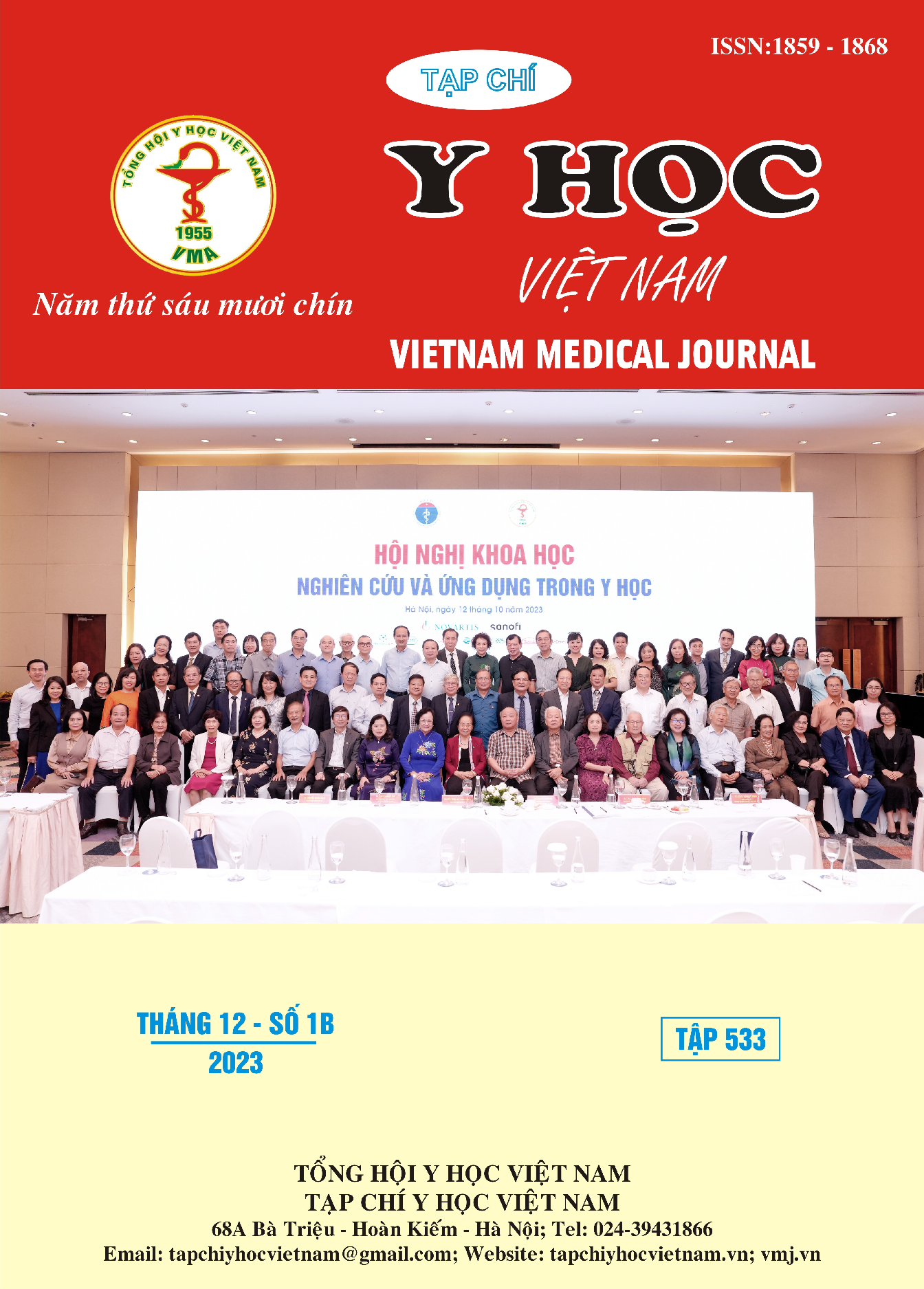DISTRIBUTION AND ANTIBIOTIC RESISTANCE CHARACTERISTICS OF ACHROMOBACTER SPP. ISOLATED FROM MILITARY HOSPITAL 103
Main Article Content
Abstract
Objective: Study the distribution and antibiotic resistance characteristics of Achromobacter spp. isolated from Military Hospital 103 in the period from 2014 to 2022. Subject and methods: This was a descriptive study. The subject of the study was Achromobacter spp. strains isolated from Military Hospital 103 in the period from 2014 to 2022. Results: The total number of Achromobacter spp. strains isolated in the period of study was 37. Of which, the percentage of Achromobacter spp. isolated from patients in the age group of ≥50 years was 72.9%. The rate of Achromobacter spp. causing diseases in male (67.6%) was approximately two time higher than that in female (32.4%). The proprotion of Achromobacter spp. isolated from blood and respiratory tract was the highest among specimens, at 43.2% and 29.7%, respectively. The percentage of Achromobacter spp isolated from the Respiratory Center was the highest among hospital wards, at 35.1%. Achromobacter xylosoxidans (78,4%) was the most common species in the genus of Achromobacter causing diseases. Achromobacter spp. was the most resistant to Ciprofloxacin (45,7%) and Trimethoprim/ sulfamethoxazole (25,0%) and least resistant to Imipenem (2,9%) và Piperacillin/ tazobactam (3,7%). Achromobacter spp. was the most sensitive to Piperacillin/ tazobactam (92,6%) and Meropenem (85,7%). Conclusion: The present study indicated that Achromobacter spp. mostly caused bacteremia and respiratory tract infection. Achromobacter xylosoxidans was the most common species in the genus of Achromobacter causing diseases. Achromobacter spp. was the most resistant to Ciprofloxacin and Trimethoprim/ sulfamethoxazole and most sensitive to Piperacillin/ tazobactam và Meropenem.
Article Details
References
2. B. Isler, et al., Achromobacter Infections and Treatment Options. Antimicrob Agents Chemother,(2020). 64(11).
3. K. Marion-Sanchez, et al., Achromobacter spp. healthcare associated infections in the French West Indies: a longitudinal study from 2006 to 2016. BMC Infect Dis,(2019). 19(1), 795.
4. J. Bador, et al., Innate aminoglycoside resistance of Achromobacter xylosoxidans is due to AxyXY-OprZ, an RND-type multidrug efflux pump. Antimicrob Agents Chemother,(2013). 57(1), 603-5.
5. Amy L. Leber, Clinical Microbiology Procedures Handbook, . 2016: ASM Press.
6. Clinical and Laboratory Standards Institute, Performance Standards for Antimicrobial Susceptibility Testing. 33rd ed. CLSI supplement M100 (2023).
7. C. Neidhofer, C. Berens, and M. Parcina, An 18-Year Dataset on the Clinical Incidence and MICs to Antibiotics of Achromobacter spp. (Labeled Biochemically or by MAL-DI-TOF MS as A. xylosoxidans), Largely in Patient Groups Other than Those with CF. Antibiotics (Basel),(2022). 11(3).
8. B. Isler, et al., Achromobacter Species: An Emerging Cause of Community-Onset Bloodstream Infections. Microorganisms,(2022). 10(7).


